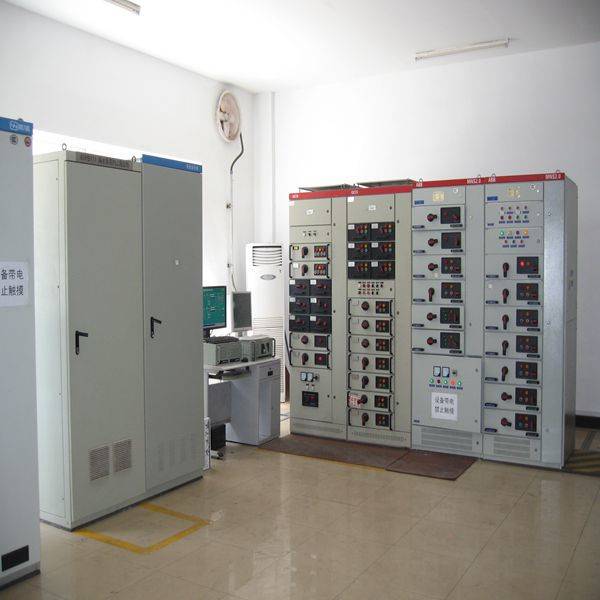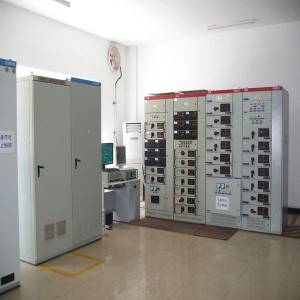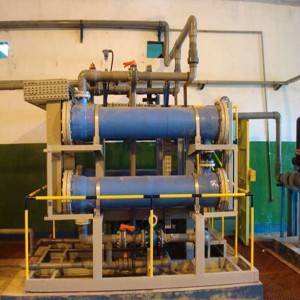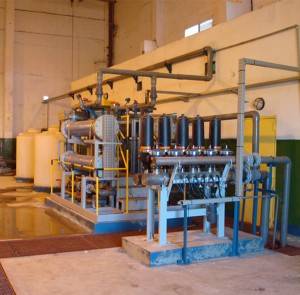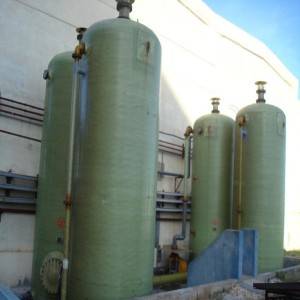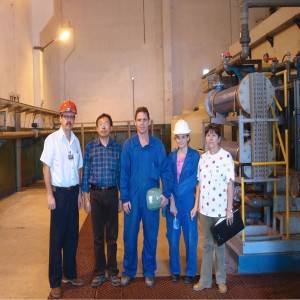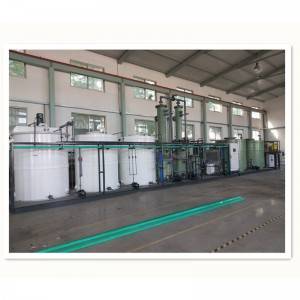Seawater Electrolysis Anti-fouling system
We emphasize progress and introduce new solutions into the market each year for Seawater Electrolysis Anti-fouling system, We’ve been sincerely seeking ahead to cooperate with shoppers everywhere in the earth. We consider we are able to satisfy along with you. We also warmly welcome buyers to visit our manufacturing facility and purchase our products.
We emphasize progress and introduce new solutions into the market each year for China Marine Growth Preventing System, With the principle of win-win, we hope to help you make more profits in the market. An opportunity is not to be caught, but to be created. Any trading companies or distributors from any countries are welcomed.
Explanation
Seawater electrolysis chlorination system take use of natural seawater to produce on-line sodium hypochlorite solution with concentration 2000ppm by seawater electrolysis, which can effectively prevent the growth of organic matter on the equipment. The sodium hypochlorite solution is directly dosed to sea water through the metering pump, effectively control the growth of the sea water microorganisms, shellfish and other biological. and is widely used in the coastal industry. This system can meet the seawater sterilization treatment of less than 1 million tons per hour. The process reduces potential safety hazards related to the transportation, storage, transportation and disposal of chlorine gas.
This system has been widely used in large power plants, LNG receiving stations, seawater desalination plants, nuclear power plants, and seawater swimming pools.
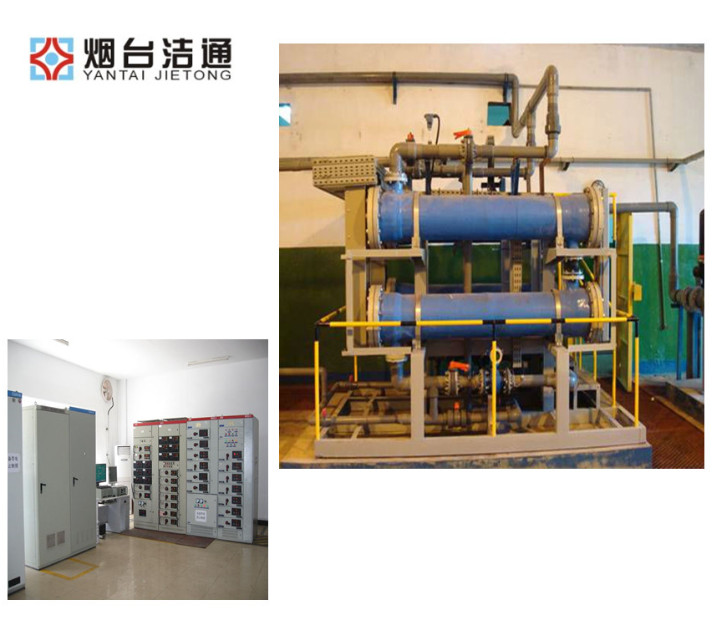
Reaction Principle
First the seawater passes through the seawater filter, and then flow rate is adjusted to enter the electrolytic cell, and direct current is supplied to the cell. The following chemical reactions occur in the electrolytic cell:
Anode reaction:
Cl¯ → Cl2 + 2e
Cathode reaction:
2H2O + 2e → 2OH¯ + H2
Total reaction equation:
NaCl + H2O → NaClO + H2
The generated sodium hypochlorite solution enters the sodium hypochlorite solution storage tank. A hydrogen separation device is provided above the storage tank. The hydrogen gas is diluted below the explosion limit by an explosion-proof fan and is emptied. The sodium hypochlorite solution is dosed to the dosing point through the dosing pump to achieve sterilization.
Process flow
Seawater pump → Disc filter → Electrolytic cell → Sodium hypochlorite storage tank → Metering dosing pump
Application
● Seawater Desalination Plant
● Nuclear power station
● Sea Water Swimming Pool
● Vessel/Ship
● Coastal thermal power plant
● LNG Terminal
Reference Parameters
|
Model |
Chlorine (g/h) |
Active Chlorine Concentration (mg/L) |
Seawater flow rate (m³/h) |
Cooling water treatment capacity (m³/h) |
DC Power consumption (kWh/d) |
|
JTWL-S1000 |
1000 |
1000 |
1 |
1000 |
≤96 |
|
JTWL-S2000 |
2000 |
1000 |
2 |
2000 |
≤192 |
|
JTWL-S5000 |
5000 |
1000 |
5 |
5000 |
≤480 |
|
JTWL-S7000 |
7000 |
1000 |
7 |
7000 |
≤672 |
|
JTWL-S10000 |
10000 |
1000-2000 |
5-10 |
10000 |
≤960 |
|
JTWL-S15000 |
15000 |
1000-2000 |
7.5-15 |
15000 |
≤1440 |
|
JTWL-S50000 |
50000 |
1000-2000 |
25-50 |
50000 |
≤4800 |
|
JTWL-S100000 |
100000 |
1000-2000 |
50-100 |
100000 |
≤9600 |
Project Case
MGPS Seawater Electrolysis online Chlorination System
6kg/hr for Korea Aquarium
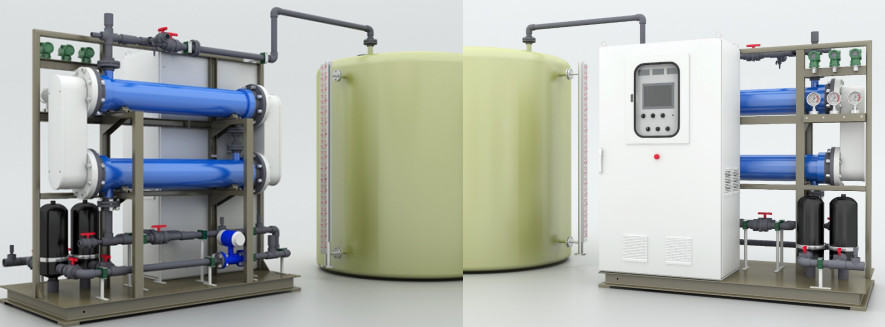
MGPS Seawater Electrolysis online Chlorination System
72kg/hr for Cuba power plant
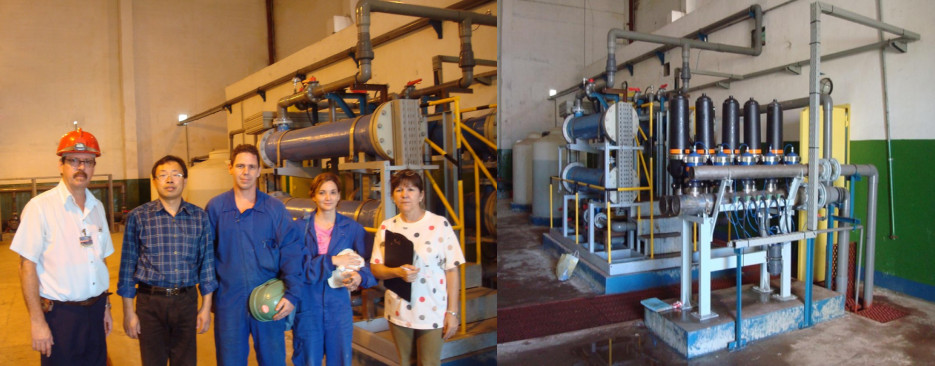 A Marine Growth Preventing System, also known as an Anti-Fouling System, is a technology used to prevent the accumulation of marine growth on the surfaces of a ship’s submerged parts. Marine growth is the buildup of algae, barnacles, and other organisms on underwater surfaces, which can increase drag and cause damage to the ship’s hull. The system typically uses chemicals or coatings to prevent the attachment of marine organisms on the ship’s hull, propellers, and other submerged parts. Some systems also use ultrasonic or electrolytic technology to create an environment that is hostile to marine growth.The Marine Growth Preventing System is an important technology for the maritime industry as it helps to maintain the ship’s efficiency, reduce fuel consumption, and extend the lifespan of the ship’s components. It also helps to reduce the risk of spreading invasive species and other harmful organisms between ports.
A Marine Growth Preventing System, also known as an Anti-Fouling System, is a technology used to prevent the accumulation of marine growth on the surfaces of a ship’s submerged parts. Marine growth is the buildup of algae, barnacles, and other organisms on underwater surfaces, which can increase drag and cause damage to the ship’s hull. The system typically uses chemicals or coatings to prevent the attachment of marine organisms on the ship’s hull, propellers, and other submerged parts. Some systems also use ultrasonic or electrolytic technology to create an environment that is hostile to marine growth.The Marine Growth Preventing System is an important technology for the maritime industry as it helps to maintain the ship’s efficiency, reduce fuel consumption, and extend the lifespan of the ship’s components. It also helps to reduce the risk of spreading invasive species and other harmful organisms between ports.
YANTAI JIETONG is a company that specializes in the production and installation of Marine Growth Preventing Systems. They offer a range of products including chlorine dosing systems, seawater electrolytic systems. Their MGPS systems use tubular electrolysis system to electrolyze seawater to produce chlorine and dose directly to seawater to prevent the accumulation of marine growth on the ship’s surfaces. The MGPS automatically injects the chlorine into the seawater to maintain the concentration required for effective anti-fouling.Their electrolytic anti-fouling system uses an electric current to produce an environment that is hostile to marine growth. The system releases chlorine into the seawater, which prevent the attachment of marine organisms onto the ship’s surfaces.
YANTAI JIETONG MGPS provides effective solutions for preventing the accumulation of marine growth on ship’s surfaces, which helps to maintain the ship’s efficiency and reduce maintenance costs.


